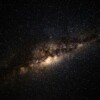“As humans we have two eyes to view the world; their combined binocular vision brings depth not available to either eye on its own.” — Sir John T. Houghton1
While curriculum vitae means “course of one’s life” its academic use normally omits materials from childhood and youth—even when vocationally important. Absent from our CV are things like, “I have always felt wonder at the beauty and complexity of the universe, and my life, from childhood, has involved a continuous quest for truths about it in both science and faith” as Sir John writes in his autobiography.2 In biographies and blogs, however, we may share vocation-shaping aspects of our early years as I do so here. The heartbeat of both Sir John’s story and likely yours, is vocation. For me it is the beauty of a tiny turtle:
Its most striking features were bright yellow stripes along its neck and head, and nice orange decorations along the margins of its shell. It looked like it had been painted with a fine artist’s brush. Remarkably, it extends its head and neck far outward and retracts it into the enclosure of its protective olive-colored shell. My young Painted Turtle was given a correspondingly beautiful scientific name, Chrysemys picta, meaning “Golden-turtle, painted.”
It was the first of many Chelonians (as turtles are called) that over my childhood and youth became my backyard zoo: a Map Turtle and Musk Turtles, a Spotted Pond Turtle and Blandings Turtles, Soft-Shelled Turtles, and Snapping Turtles. These were joined by DeKay’s Snakes, Garter Snakes, Queen Snakes, Water Snakes, and a Fence Lizard—and frogs, toads, a mudpuppy and other salamanders. By my mid-teens, I had built a room in the corner of our basement for an aviary and aquaria.
One Sunday in my teens, my uncle and aunt were visiting after our church’s evening service. Before delicacies were ready, my dad guided my uncle downstairs to see my birds and tropical fish. On their descent, I overheard my uncle ask, “Shouldn’t you help Cal do something more important than this—something that will help him get a job?” Suspecting I had overheard them, my dad later told me that I should not become a painter and decorator as he was but keep doing what I love to do; then I would do it very well; and I would eventually be paid for it.
It was his rendition of vocation from Christ’s Sermon on the Mount: “But seek first his kingdom and his righteousness, and all these things will be given to you as well” (Matt. 6:33). This truth for me is the heart of vocation. Ever since, following my father’s advice, I have been doing what I love to do. My vocation is enjoying and caring for God’s creation and helping others do so too.
Throughout my teens, before bedtime, my dad poured us both a glass of Ginger Ale at the kitchen table and had me describe and explain discoveries I made that day. Continuing nearly every evening, year-after-year—his questions elicited responses that increased in detail and clarity. This need to explain honed my abilities to teach and to learn—and better understand the lives of reptiles, amphibians, birds, and fish.
In seeking knowledge in our library in downtown Grand Rapids I found The Herpetology of Michigan. Since this book did not circulate, I took many bike trips downtown to learn more about the “herps” in my Zoo. And it provided the title of my high school career paper: “Herpetology as a Profession.” My teacher merely commented, “limited employment opportunity.” Less enthusiastic were folks asking about what good came from study of such “creepy-crawly things.” Well, I could run a pet store, become a zoo veterinarian, or maybe a zoo director. But these were not my goal. Neither was seeking a college degree, nor, of all things, a doctorate.
Importantly, my high school Bible teacher required an oral presentation of a written sermon report every Monday on one of the two sermons we heard on Sunday. He also was a scholarly and passionate preacher at a local church, and identified things we had missed, explained things we did not understand, and taught us how to take better notes. With his encouragement and discipline, we came to know scholarship from him and these sermons. Following my love, I enrolled in Calvin College, where I was provided a small laboratory for research on feather development in Australian parakeets—birds from my aviary. I completed every biology course, in context of the liberal arts, focused on “integration of faith and learning,” and I next entered graduate school in Zoology at The University of Michigan, doing my doctoral research on the Desert Iguana.
From childhood, my heritage fostered a passion for learning from and about the world. Its focus was Article 2 of the Belgic Confession, written in 1561 on “The Means by which We Know God.”
“We know God” it says, “by two means:”
First, by the creation, preservation, and government of the universe,
since that universe is before our eyes like a most elegant book
wherein all creatures, great and small, are as letters
to make us ponder the invisible things of God:
his eternal power and his divinity, as the apostle Paul says in Romans 1:20.
All these things are enough to convince men and leave them without excuse.Second, he makes himself known to us more openly by his
holy and divine Word, as much as we need for this life, for
his glory and the salvation of his own.
—Psalter Hymnal, 1934, 1959, and 1987
Wonderfully, this Article inspired us to read and study that “most elegant book” of God’s creation together with “his holy and divine Word.”
Most importantly, these books, of the Creation and the Word, need not to be read one after the other but together—binocularly, as Sir John Houghton reminds us at the top of this essay. He also says, “Similarly, as I have sought to put my science and my faith alongside each other, the combination of my material eye and my spiritual eye has brought and continues to bring richness beyond my imagination. In my ongoing quest for truth, I have been treated to true beauty.” It was from this “two-books” confession that I came to identify The Book and The Biosphere as the means by which we know God and God’s will for rightly living on Earth.
Recently searching for “binocular vision” on the internet, I found a research report from the Max Planck Florida Institute for Neuroscience: “Everything we see, from a work of art to the laugh lines on a loved one’s face, are seen not only with our eyes but through complex networks of neurons that piece together information to create a picture in our brain. Information is taken in through the eyes and processed in incredibly complex ways: some neurons detect edges, others encode colors, still others interpret depth or motion. Each eye takes in information independently, and it’s up to the brain to piece it together into an accurate, coherent picture.”3
As it is up to the brain to use binocular vision to integrate what we see from both eyes, so too it is for reading that “most elegant book” and “his holy and divine Word.” As I write this sentence, I am using a new acrylic lens in my right eye because of cataract surgery on July 26, that within a day gave me clear vision. My left eye still gives me cloudy vision and is waiting for lens replacement 15 days after the right eye. I have clear vision with my right eye; fuzzy vision with my left.
Each eye by itself gives just a 2-dimenional image much like a flat photograph. But with both eyes there is binocular vision, providing vision with depth—in three dimensions. So right now, when both eyes are open my brain uses one cloudy image and one clear image to make me see in depth. Now, you might expect that right now, seeing with both eyes might produce an image somewhere between fuzzy and clear? But no. Seeing with one fuzzy and one clear, I see a clear image! My brain is relying on both eyes for depth, but my right eye for clarity. My brain is relying primarily on my right for detail, and both eyes for depth. Why? Because “it’s up to the brain to piece it together into an accurate, coherent picture.”
Yes, it is up to the brain and our use of our brain to use binocular vision to integrate that “most elegant book” and “his holy and divine Word.” It is this vision that empowers us to “seek first his kingdom and his righteousness” as the heart of vocation.
Footnotes
- John T. Houghton, In the Eye of the Storm ( Oxford: Lion Hudson, 2013.), 264.
- Houghton, In the Eye of the Storm, 83.
- “Understanding Binocular Vision,” Max-Planck-Gesellschaft, 2022, https://www.mpg.de/20309406/understanding-binocular-vision.
























Professor DeWitt,
Your writing is amazingly wonderfilled. Having 5 grandsons, when “littles,” but even now as adults with 6 children between them LOVE creepy crawly things. I have forwarded your inspiring testimony to each of the…and their parents.
THANK YOU
This is a lovely meditation on vocation and the holism of faithful learning. Thank you.
Thank you Cal for reminding us of the need for deeper vision of Gods creation. And thank you for your contribution to encouraging this over many years.
Bill Dyrness
He gives us loves that others may not understand-and don’t need to. He calls us to vocations that some my diss-as a senior pastor dissed my taking a doctorate over doing more in missions-but the loves, the passions He gives us, are gifts from Him to share with others. What a great example here, and I praise God for the father He gave you who encouraged you to follow your passions.